by Justin Aufdermauer
Executive Director
For the last few weeks, I’ve been watching from the window a transformation across the street from the Chamber.
Crews from North Coast Lawn and All Repair and Remodel has started a renovation project on a downtown storefront that will end in an updated façade and bright, welcoming spot for a local retailer. And that’s just one of many projects underway right now in downtown Tillamook!
Watching the progress of all these building updates has me thinking about the importance renovations but the challenges some of our businesses might face when they decide to do them. So I thought I’d use this week to roll out the third column in my Big Tasks, Lengthy Solutions series, which focuses on long-term and high-investment projects that are important for the community but aren’t solvable overnight.
(Remember, I’ve also talked about housing and local growth in the Big Tasks Lengthy Solutions series. If you’re interested, you can find those columns at tillamookchamber.org/blog).
Downtown renovations are probably one of the most noticeable topics to cover in this series, because you can really see the difference they make when they happen. A new coat of paint, sign for facade is eye catching and hard to ignore. But downtown renovations are about more than making things look pretty — though that’s definitely a plus.
According to the Oregon Main Street Program, a program focused on revitalizing downtown districts throughout the state, downtown renovation projects play a huge part in the local economy and quality of life. Downtowns are historically the cultural, educational, commercial, recreational and governmental center of a community. Downtown Tillamook started as the heart of our community, and it continues to be the face we project to visitors, investors and each other. You can’t visit Tillamook without driving right through downtown.
Think of downtown kind of like Tillamook’s personality and reputation. If our downtown district is doing well and looking good, the rest of our community probably is, too. And that’s something we all can be proud of, and something that benefits the local economy and quality of life.
How exactly does it do that? I’ll answer that question with a question. Would you prefer to shop at a store with a beautiful exterior and fresh coat of paint or a store that looked dark, dingy and not cared for? The answer is easy: You’ll favor the bright and beautiful shop! And if all of our shops look bright and beautiful, you’ll be more likely to shop locally more often, keeping your money in our local economy and generating more local sales overall.
The same goes for a prospective business or company looking to move in. Would you rather bring a new service to a community that’s vibrant and beautiful, or one that is a little blah? Obviously, you want to go somewhere that people are happy, supporting local businesses and excited to have you! That’s not just anecdotal, either. OMS found that in cities where downtown revitalization projects were happing, new businesses were more likely to move in, providing more services and amenities for the people that lived there. That’s a big quality of life boost.
Downtown revitalization also proves good for the environment and public investment. According to OMS, 30% of solid waste in landfills comes from demolishing old buildings. And it costs a lot to purchase materials to build a new structure afterward. Rehabilitating and reusing old buildings — those historic storefronts that get a facelift when we redo a façade or repaint the exterior — is good for the environment, because it makes significantly less waste. It also saves money: Large investments were made to build those shops to start with, so it’s economically savvy to take care of those buildings for the long-term.
Still, it goes without saying that building renovation projects cost money, even if it’s cheaper than starting anew. Businesses have to invest in materials and labor to make them happen. They also have to take the time to do the renovations, which might mean closing temporarily.
Yes, the improvements will benefit their business and enhance the quality of life for everyone that lives here as outlined above. But before they can make those improvements, a business needs to find funding.
Fortunately, there are funding opportunities reserved just for projects like this. The Tillamook Urban Renewal Agency, for example, reviews local projects downtown (and in other areas included in the urban renewal district) and provides grant funding to help both private and public property owners complete those projects. There are requirements a project must meet to quality for TURA funding, including improving and retaining existing businesses, promoting private development to increase the city’s economic base, and providing housing. More information about TURA is available online at tillamookor.gov/urban-renewal.
TURA has assisted private property owners with façade improvements including awning replacement, painting, and window replacement. They also played a role in expanding the Tillamook Coliseum Theater, improving sidewalks, installing playground equipment and constructing a public parking lot. The Chamber works with businesses on TURA grant applications to make it easier for them to access those funds and make real, on-the-ground improvements.
We hope that our assistance helps to remove barriers or questions local businesses might have about funding vital downtown renovation projects. We also hope it leads to more downtown revitalization projects, so this importance district in our community can continue to grow and improve.
